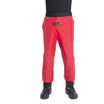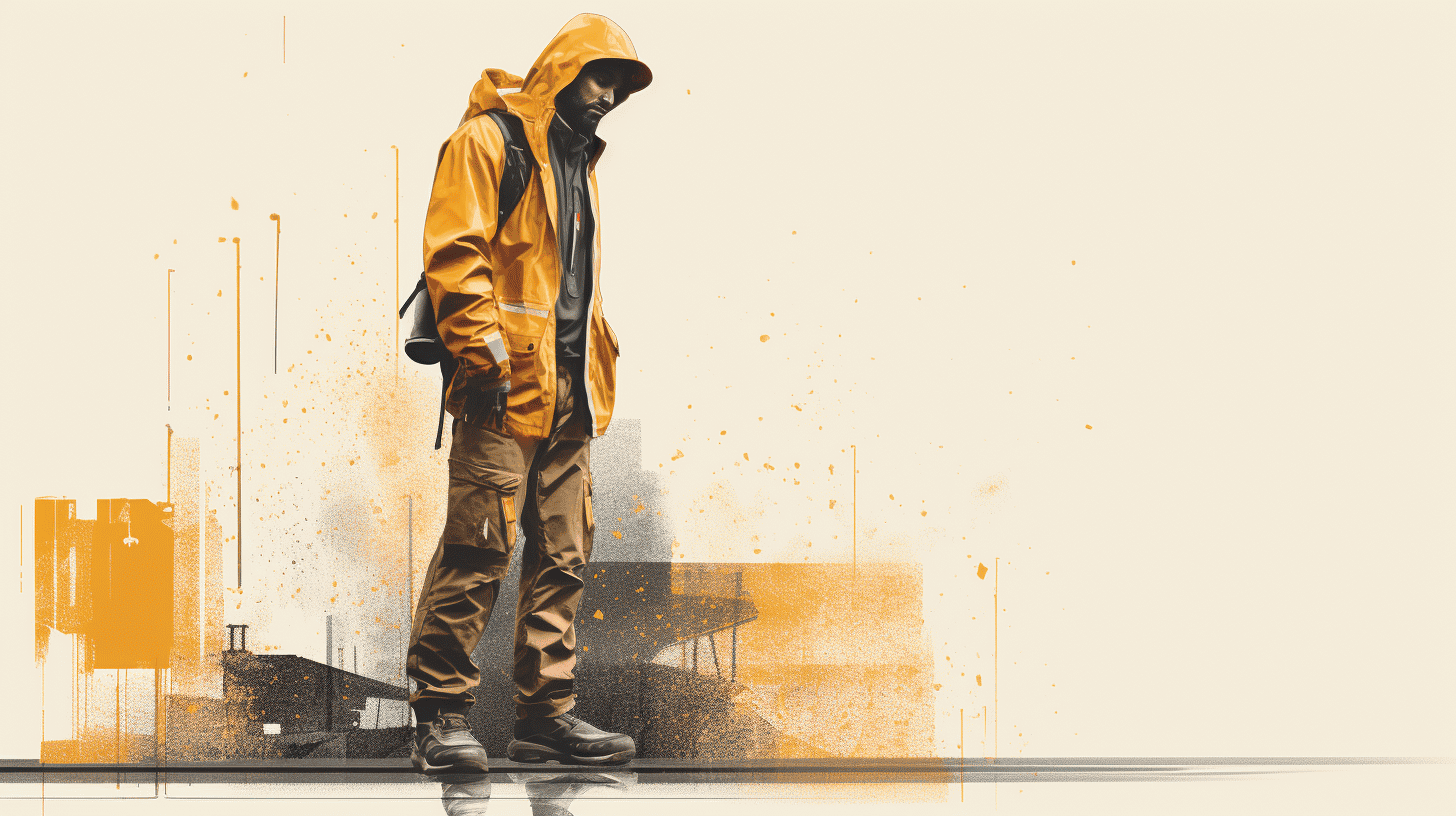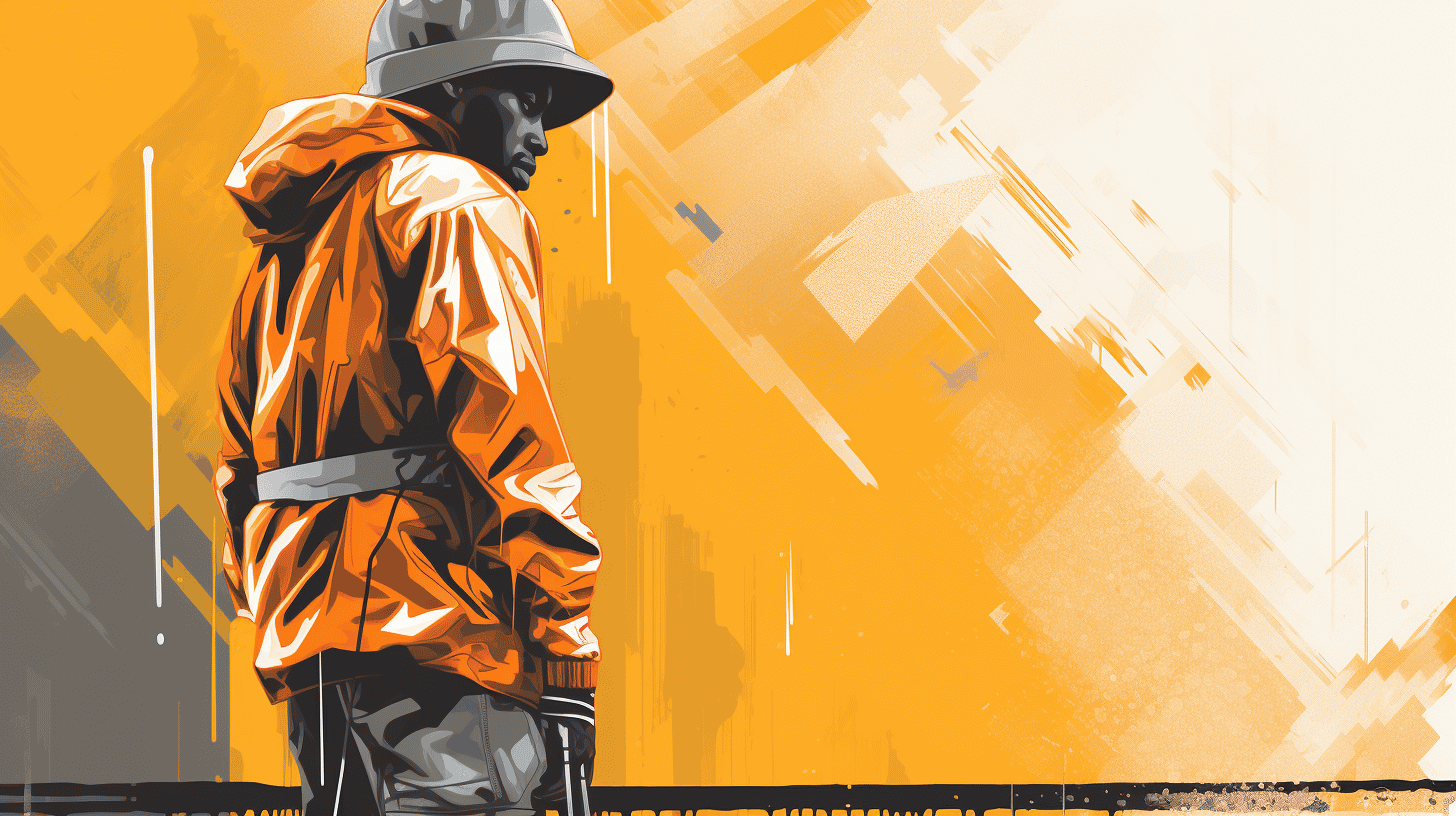Engaging in construction work is no mean feat, particularly when the skies decide to shower their blessings from above. For construction workers, braving volatile weather conditions becomes a formidable part of their daily routine. But work doesn't have to be paused just because the heavens have opened. With the right rain gear, construction can proceed unabated, keeping project timelines intact and the workers safe. In this article, we delve into the importance of rain gear for construction, the current market trends, and tips on selecting the best rain gear that ensures not just comfort, but also safety. Whether you're a seasoned construction pro or a novice in the field, this guide promises to arm you with the knowledge you need to weather the storm at your work site.
Understanding the Risks: Statistics on Construction Accidents
Construction sites may buzz with activity and aesthetic progress, but beneath the hum of the machinery and the clattering tools, a darker reality often lurks. The construction industry, while critical for infrastructural growth, is unfortunately one of the most high-risk fields for workers. In this section, we'll dive deep into the not-so-rosy side of this industry, examining the statistics on fatal accidents and common injuries that underline the daunting reality of construction safety.
Annual Fatalities in U.S. Construction Industry
Over 5000 U.S. workers face their untimely demise on construction sites every year, according to statistics from the U.S. Bureau of Labor Statistics. A staggering number, indeed! This statistic isn't just a cold hard number, though. It’s a solemn reminder of the sacrifice rendered by those who toil in this industry.
To put it into perspective, in 2015 alone, there were 937 fatal work injuries in the construction industry. That's almost three construction-related deaths every single day of the year! These jarring figures reveal an urgent need for more stringent safety measures, demanding our unwavering attention towards improving the standards of occupational safety in construction.
Common Injuries: Slips and Falls
While fatal incidents are incredibly concerning, not all construction accidents result in death. Some lead to non-fatal but debilitating injuries which can have significant impacts on the worker’s quality of life. Slips and falls are one of the most common forms of these injuries.
In fact, they make up a substantial proportion of workplace injuries, with a reported 450,540 cases a year according to the Bureau of Labor Statistics. Slips and falls not only contribute to the immediate discomfort of the injured worker but may also lead to long term physical and psychological issues, escalating the risks of working in this profession further.
To conclude, the construction industry is fraught with risks that are far too often overlooked. Each statistic we mentioned is not just a number, but represents lives impacting by workplace accidents. These numbers shout for improved safety protocols, better training, and an unwavering commitment from all stakeholders towards ensuring worker safety. After all, our city skylines are bright and beautiful, thanks, in part, to the people who risk their lives building them.
We cannot change the past, but with conscious efforts, we can contribute to a safer future for the stalwarts of the construction industry. And that begins with understanding, acknowledging, and addressing these risks.
The Global Rainwear Market
Market Size 2020-2022
Did you know that the global rainwear market has experienced significant growth over the past few years? Despite 2020's economic turbulence, this sector emerged resilient. In fact, the market size was valued at an impressive $886.4 million in 2020. The subsequent year, 2021, still witnessed this steady positive trajectory, with a compound annual growth rate (CAGR) of 6.4%.
By the end of 2022, this fascinating market had experienced an extraordinary leap, with the market value skyrocketing to a whopping $3864.7 million. This steady growth clearly illustrates the resilience and potential of the rainwear market, especially considering the global economic climate over that period.
Projected Growth 2023-2032
If you think that this growth has been astonishing, wait until you hear about the projected statistics. The rainwear market isn't stopping anytime soon. It's expected to register a compound annual growth rate (CAGR) of 5.5% between 2023 and 2032.
This means that the global rainwear market, which sits at about $3.8 billion as of 2022, is predicted to surge to an astonishing $6.4 billion by 2032. That's about a 5.4% CAGR within a ten-year forecast period.
But what's driving this significant growth? Several factors come into play, including global climate changes, increased consumer awareness about protecting garments and electronics from rain, and fashion trends shifting toward functional and stylish rainwear.
Overall, as umbrellas are no longer the sole reliable option for staying dry, the rainwear market is making a powerful statement in the world's financial arenas. It's evidence that even a downpour can have a considerable silver lining.
Make sure to keep an eye on this rising sector; it could serve as a valuable barometer of future trends in the broader fashion industry and beyond.
Choosing the Best Rain Gear for Construction Workers
Rain-soaked construction workers shouldn't be the standard image that comes to mind when you imagine a worksite amidst a downpour. Today, the market for protective wear has evolved drastically. It is now thriving with products specifically designed to keep our hardworking men and women dry and comfortable as they forge ahead with their tasks, irrespective of the weather. Let's explore what it takes to make an informed choice when selecting the best rain gear for construction work.
Key Considerations
The crux of choosing the right rain gear revolve around three factors: comfort, durability, and waterproofing.
- Comfort: Remember, comfort isn't a luxury in this scenario; it's a necessity. Construction work often involves long hours that require a high level of physical activity. An optimized, comfortable suit will feature adjustable components like hoods, waistbands, and cuffs. It will also be breathable, thus preventing workers from being drenched in their own sweat.
- Durability: Construction sites are a demanding environment for any material to survive in. Therefore, profound durability is paramount. Quality gear will resist abrasions and tears, have reinforced seams, and stand up to frequent wear and tear.
- Waterproofing: Last but unquestionably not least is waterproofing. A rain suit's essential purpose is to keep the wearer dry. Your chosen gear must not only repel water but also prevent it from penetrating through the seams.
Optimizing Safety in Rainy Weather
Aside from the above-mentioned factors, there are special considerations for wet weather conditions on construction sites. A standout concern is visibility.
Most construction work happens outdoors, making it crucial for workers to remain visible in heavy rain. Rain gear often includes reflective accents or high-visible colors to tackle this issue. A bonus is that these visibility measures also increase safety during nighttime.
In addition, you mustn't overlook slip resistance. Wet conditions increase the risk of slips and falls, hence, footwear with non-slip soles becomes another requirement for comprehensive rain gear.
With these recommendations in mind, Choosing Best Rain Gear for construction workers can become a relatively simple task. The right gear makes for a safer, more comfortable, and ultimately, more productive construction site, even during those relentless rainstorms.
Remember, these suggestions aren't just about employee comfort. The correct gear can drastically reduce the risk of accidents, ensure compliance with safety regulations, and directly contribute to the success of the project. So, make rain gear a top priority, because when it rains, it pours!
Conclusion
Time and again, protection from the elements has proven to be instrumental in maintaining safety on construction sites, particularly in inclement weather. Equipping yourself with high-quality rain gear such as that offered by Hurricane Raingear is not only an investment in personal comfort, but also a substantial contribution to overall site safety.
Hurricane Raingear provides scratch-resistant and fully waterproof rain gear that offers both excellent comfort and stellar performance in the harshest of conditions. Highlighting features like breathability and enhanced visibility, they are committed to keeping you not just dry, but also safe during your construction endeavors.
So, next time the dark clouds roll in, don't let the rain get in your way. Face it head on, secure in the knowledge that you're fully protected by the best gear on the market. Remember, in the construction industry, the right gear is not just an add-on—it's a necessity. Equip yourself with the best and keep those productive wheels turning, come rain or shine.
Frequently Asked Questions
-
What are the essential rain gear items for construction workers?
The essential rain gear items for construction workers include a waterproof jacket, waterproof pants, waterproof boots, a waterproof hat or hard hat cover, and waterproof gloves.
-
Are there any specific brands that are recommended for rain gear?
Some popular and recommended brands for rain gear include Carhartt, Columbia, The North Face, Helly Hansen, and Marmot. These brands are known for their durability and water-resistance.
-
Can I use regular work boots in rainy conditions?
Regular work boots may not be fully waterproof, so it's recommended to invest in waterproof boots specifically designed for wet conditions. These boots have additional water-resistant features to keep your feet dry and comfortable.
-
What are the benefits of wearing rain gear on the construction site?
Wearing rain gear on the construction site provides protection against wet conditions, keeps you dry and comfortable, prevents hypothermia or cold-related illnesses, and allows you to focus on the job without the distractions of being wet.
-
How do I take care of my rain gear to ensure its longevity?
To ensure the longevity of your rain gear, follow the manufacturer's care instructions. Generally, it involves regular cleaning, drying, and occasionally applying water-repellent treatments. Avoid using harsh chemicals or abrasive materials that may damage the waterproofing properties of the gear.























Leave a comment
This site is protected by hCaptcha and the hCaptcha Privacy Policy and Terms of Service apply.